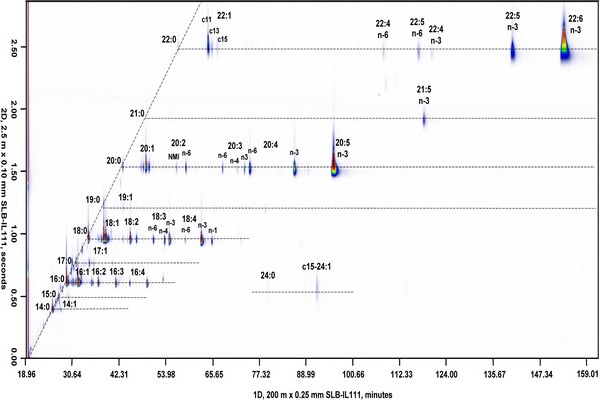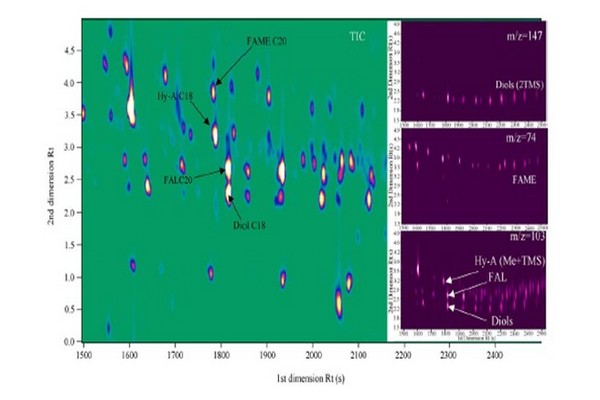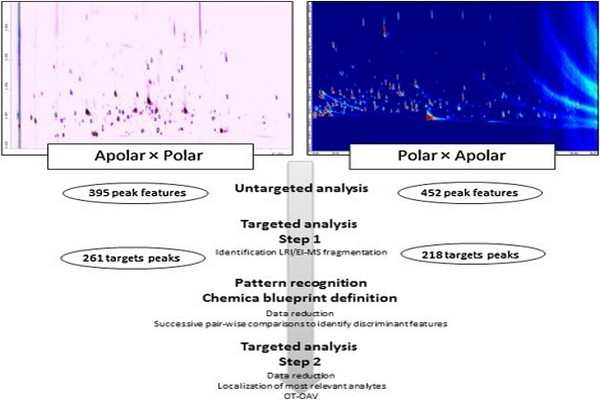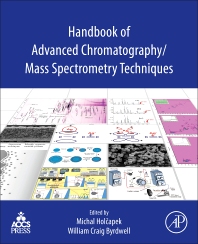
Figure 11.1
GC x GC analysis of human plasma fatty acids. For peak identification refer to Tranchida et al. (2008b). GC, gas
chromatography.

Figure 11.2
Comparison of the second-dimension resolution between a traditional and a split-flow GC x GC system, in cod liver fatty acid methyl esters analysis; expansion of the C16 group. GC, gas chromatography.
Reproduced with permission from Purcaro, G., Tranchida, P.Q., Mondello, L., 2011. Comprehensive 2D GC methodologies for the analysis of lipids. In: Byrdwell, W.C., Holcapek, M. (Eds.), Extreme Chromatography: Faster, Hotter, Smaller. AOCS Press, Urbana, IL, pp. 381-430.

Figure 11.3
Two-dimensional chromatogram of menhaden fish oil sample obtained using GC-online hydrogenation x GCFID. FID, flame ionization detector; GC, gas chromatography.
Reproduced with permission from Delmonte, P., Fardin Kia, A.R., Rader, J.I., 2013. Separation of fatty acid methyl esters by GC-online hydrogenation x GC. Anal. Chem. 85, 1517-1524.

Figure 11.4
GC x GCetime-of-flight mass spectrometry total ion current (TIC)-chromatogram of a methylated and silylated lanolin sample (on the left). Inserted windows of extracted ions (m/z 74, 103, 147). FAL, fatty alcohol; FAME, fatty acid methyl ester; Hy-A, hydroxyl acids; ME, methyl derivative; TMS, trimethylsilyl derivative.
Reproduced with permission from Jover, E., Adahchour, M., Bayona, J.M., Vreuls, R.J.J., Brinkman, U.A.T., 2005. Characterization of lipids in complex samples using comprehensive two-dimensional gas chromatography with time-of-flight mass spectrometry. J. Chromatogr. A 1086, 2-11.


